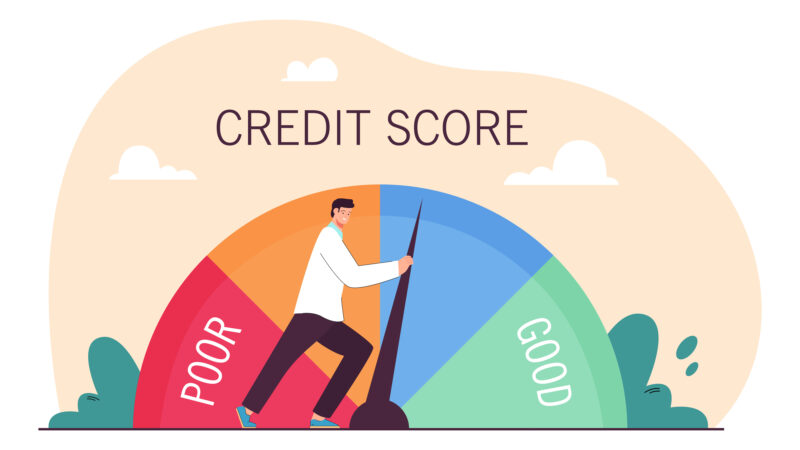Budgeting for Beginners in 2025: The Ultimate Guide to Building a Smart Money Plan That Actually Works

Budgeting for Beginners in 2025: Learn how to budget smarter in 2025. Discover simple, step-by-step strategies to manage money, save more, and achieve your financial goals easily.
🏁 Introduction
If you’ve ever wondered where all your money goes before the month ends, you’re not alone.
Millions of Americans struggle to manage their finances—not because they don’t earn enough, but because they don’t have a clear budget plan.
A good budget is not about restricting your spending—it’s about giving your money direction.
In 2025, with inflation, rising rent, and digital payment temptations, having a smart money plan is more essential than ever.
In this guide, we’ll walk through practical steps to create and maintain a realistic budget, even if you’ve never done it before.
🧩 What Is Budgeting and Why It Matters
Budgeting is the process of planning how you’ll spend and save your money each month.
Think of it as a financial roadmap—it tells every dollar where to go instead of wondering where it went.
Why Budgeting Is Important
- Helps you avoid debt and overdraft fees
- Builds emergency savings
- Keeps you accountable for your financial goals
- Reduces stress and improves mental well-being
A 2024 Bankrate study found that only 44% of Americans use a budget, but those who do report better savings and less financial anxiety.
📊 Step 1: Calculate Your Monthly Net Income
Your net income is the amount you take home after taxes and deductions.
This is your real spending money.
Example:
If your gross salary is $5,000/month, but after taxes you receive $4,100 — your net income = $4,100.
💡 Pro Tip: Include side hustles, freelance earnings, and passive income sources too (like dividends or rent).
🧾 Step 2: Track Every Expense
Before you create a budget, you need to understand where your money currently goes.
How to Track Expenses
- Manual method: Use a notebook or Excel sheet
- Apps: Mint, Monarch Money, or YNAB (You Need A Budget)
- Bank download: Export your statement and categorize spending
Categorize spending into:
- Fixed Expenses: Rent, mortgage, insurance, car payment
- Variable Expenses: Groceries, utilities, fuel, entertainment
- Discretionary Spending: Dining out, subscriptions, hobbies
Example Table – Expense Breakdown
| Category | Average Monthly Spend | Notes |
|---|---|---|
| Rent & Utilities | $1,500 | Fixed |
| Groceries | $400 | Variable |
| Transportation | $300 | Variable |
| Entertainment | $200 | Discretionary |
| Savings | $500 | Automatic |
| Miscellaneous | $100 | Flexible |
Once you see where the leaks are, you can make informed changes.
💡 Step 3: Choose a Budgeting Method That Fits You
There’s no “one-size-fits-all” budget. Choose a system that fits your habits and goals.
🧮 1. 50/30/20 Rule
A simple and popular method:
- 50% Needs (rent, food, bills)
- 30% Wants (entertainment, dining)
- 20% Savings or Debt Repayment
Example:
If you earn $4,000/month:
- Needs = $2,000
- Wants = $1,200
- Savings = $800
It’s beginner-friendly and flexible.
📦 2. Zero-Based Budget
Assign every single dollar a job.
Income minus expenses = Zero (on paper).
You plan spending down to the last cent so that nothing is wasted or unaccounted for.
💰 3. Envelope Method (Cash or Digital)
Traditionally, people would put cash into labeled envelopes (e.g., “Groceries,” “Gas,” “Fun”).
When the envelope is empty, that’s it.
In 2025, you can do this digitally with apps like Goodbudget or YNAB.
📊 4. Pay Yourself First Method
Before paying bills, set aside money for savings automatically.
It forces you to treat savings like a non-negotiable bill.
🏦 Step 4: Build an Emergency Fund
Life happens—car repairs, medical bills, layoffs.
That’s why you need an emergency fund to protect your finances.
💰 Goal: 3–6 months of essential expenses
Example:
If your basic monthly needs = $2,500
Then target emergency fund = $7,500–$15,000
Start small—save $25–$50/week until it builds up.
Keep it in a high-yield savings account (HYSA) like SoFi, Ally, or Marcus.
📉 Step 5: Reduce Unnecessary Spending
It’s not about eliminating joy—it’s about spending on what truly matters.
Try this audit:
- Cancel unused subscriptions (streaming, apps)
- Limit food delivery and coffee runs
- Compare insurance and utility providers annually
- Use cash-back or reward credit cards for planned spending
💡 Use the “24-hour rule” before making non-essential purchases.
💳 Step 6: Manage and Pay Off Debt
Debt is the biggest obstacle to saving and budgeting effectively.
Two Popular Payoff Methods
| Method | Focus | Best For |
|---|---|---|
| Debt Snowball | Pay smallest balances first | Motivation, quick wins |
| Debt Avalanche | Pay highest interest first | Long-term savings |
Example:
If you owe:
- $1,000 (18% APR)
- $2,000 (12% APR)
- $5,000 (8% APR)
Snowball = pay $1,000 first for motivation
Avalanche = pay $1,000 (18%) first to save more interest
Pick the one that keeps you consistent.
🧠 Step 7: Automate Everything
Automation helps you stay disciplined without effort.
✅ Set auto-transfer to savings every payday
✅ Automate bill payments to avoid late fees
✅ Use round-up apps (like Acorns) to invest spare change
Automation removes the emotional decision-making from budgeting.
📲 Step 8: Use Technology to Stay on Track
Budgeting in 2025 doesn’t mean Excel sheets anymore.
Here are top-rated budgeting tools for Americans:
| App | Best For | Cost |
|---|---|---|
| Mint | All-in-one budgeting and tracking | Free |
| You Need A Budget (YNAB) | Zero-based budgeting | $14.99/mo |
| Monarch Money | Shared budgets for couples | $8/mo |
| Rocket Money | Canceling subscriptions | Free / Paid |
| PocketGuard | Real-time spending control | Free |
These tools connect securely to your bank and help you analyze patterns.
💼 Step 9: Plan for Short- and Long-Term Goals
Without goals, budgets become boring and hard to follow.
Short-Term Goals (3–12 months):
- Pay off credit card debt
- Save for a vacation or laptop
Long-Term Goals (1–10 years):
- Buy a home
- Build retirement fund
- Start a business
Assign each goal a specific dollar target and timeline.
For example:
“Save $10,000 for house down payment in 18 months = $555/month.”
💹 Step 10: Adjust and Review Monthly
Budgeting isn’t a one-time task—it’s ongoing.
Set aside one day each month (like the first Sunday) to:
- Review your spending
- Update goals
- Adjust your budget for income or expense changes
💡 Use the “80/20 rule”: 80% consistency matters more than 100% perfection.
🧭 How to Stay Motivated with Your Budget
Budgeting burnout is real, especially early on.
Tips to stay consistent:
- Reward yourself occasionally for sticking to goals
- Join budgeting communities on Reddit (r/personalfinance)
- Track progress visually with charts
- Focus on how budgeting improves your freedom, not your restrictions
🌱 Bonus: The Psychology of Money Habits
Many people fail at budgeting because of emotional spending, not math errors.
Recognize your “triggers”:
- Stress → impulse buys
- Boredom → online shopping
- Social pressure → overspending
Build alternatives like walking, journaling, or budgeting challenges instead.
📈 Example: A Beginner’s Monthly Budget Plan
| Category | Budgeted | Actual | Difference |
|---|---|---|---|
| Rent & Utilities | $1,400 | $1,400 | $0 |
| Groceries | $400 | $370 | +$30 |
| Transportation | $250 | $280 | -$30 |
| Entertainment | $150 | $120 | +$30 |
| Savings | $500 | $500 | $0 |
| Debt Repayment | $300 | $300 | $0 |
| Total | $3,000 | $2,970 | +$30 |
✅ Result: You stayed under budget—celebrate small wins!
💬 FAQs
Q1. How much should I save each month?
Aim to save at least 20% of your income—more if you’re paying off high-interest debt first.
Q2. What if my income varies every month?
Use your average income from the past 6 months as a base, and prioritize fixed expenses first.
Q3. Is it okay to use credit cards while budgeting?
Yes—if you pay them off monthly. Credit cards help track expenses and build credit, but avoid interest.
Q4. How do couples budget together?
Use shared apps like Monarch Money or Honeydue. Combine fixed costs, but keep some “personal money” separate for flexibility.
🎯 Conclusion: Take Control of Your Money, One Step at a Time
Budgeting doesn’t mean cutting out everything you love—it means being intentional about what you spend on.
Start small:
- Track expenses
- Pick a budgeting method
- Automate savings
- Review monthly
Within a few months, you’ll see where your money goes, save more, and feel more in control than ever before.
💬 Remember: “A budget is telling your money where to go instead of wondering where it went.” — Dave Ramsey







